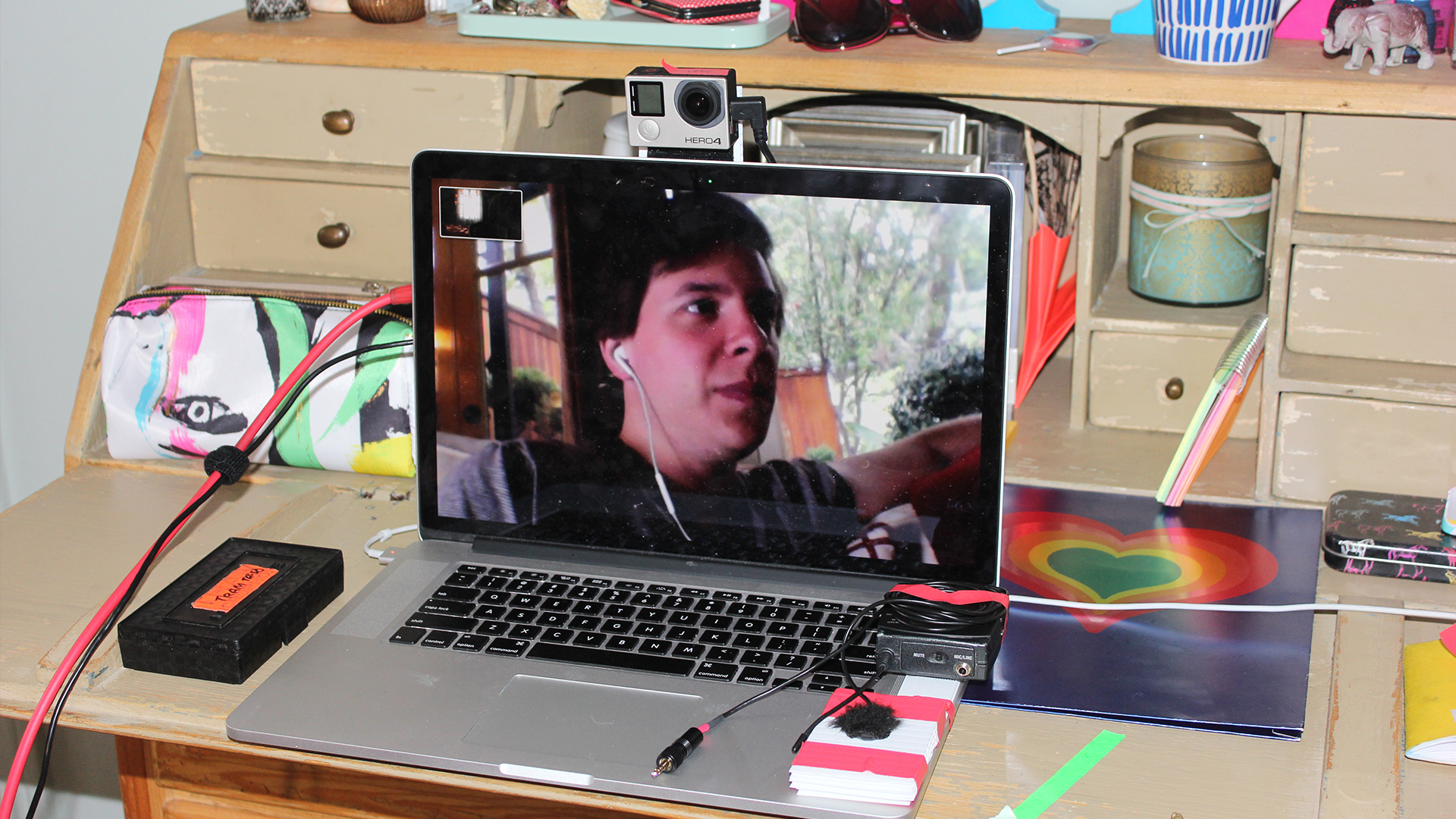When it comes to award winning movies, you may imagine high-budget blockbusters that use professional camera gear to achieve cinematic shots. But filmmakers are challenging the artform by using modern consumer technology as a crucial part of the storytelling.
Face 2 Face, now available on Netflix, is an independent movie told through computer/phone screens of two American teenagers. This coming of age drama reunites two childhood friends who communicate through FaceTime and bond over revealing their darkest secrets.
The Toronto brothers, Matthew and Aaron, shot the movie entirely on the GoPro Hero 4, with the intent to mimic the look of Apple's FaceTime chat service.
Why GoPro?
Director, Matthew Toronto, told us he decided against using a cinema camera as the image would look too polished, defeating the realism of it coming from a webcam. Toronto landed on using a GoPro, as he believed it had the most organic look for what he was going for. It was also much more affordable than a cinema camera.
But Toronto tested out other cameras too, including the iPhone, to compare image quality. While the iPhone produced a clean image, the GoPro was the winner as it felt the most natural to Toronto. He also praised the ability to control manual settings, colour profiles, and connectivity. The weight and form factor were also a reason for the decision, as the weight affected the movement when the actors held it.
Setup
Director of Photography, Kristoffer Carrillo, made camera rigs using foam core and velcro, which allowed him to get the camera in the right position and mount accessories. The setups could be changed to mimic a laptop’s webcam, phone’s selfie camera, or “pocket cam”. Carrillo also lit each scene 360 degrees, so little to no lighting adjustments had to be made throughout each scene.
Actors Daniela Bobadilla and Daniel Amerman talked to each other over a real FaceTime connection in different rooms, while the GoPros got the shot. The filmmakers watched the performances through live video feeds and rigged microphones.
Benefits and challenges
Shooting an entire film on a GoPro sounds rather unconventional, and with that, the filmmakers faced various benefits and challenges.
Starting with benefits, Toronto praised the usability of the GoPro Hero 4. He mentioned the form factor, as well as intuitive controls, helped the team shoot the movie quickly. In fact, the entire shoot only took 9 days. To put this into perspective, most Hollywood movies take 45-60 days to shoot. Toronto says the fast turnaround was largely due to the simplicity of the camera setup. This was another reason why Toronto wanted to avoid a cinema camera like Red or Arri, which often require more crew and accessories to fully operate.
The small size of the GoPro was an important aspect to production. It allowed the actors to also act as the camera operators, while interacting with their laptop/phone. Toronto expressed admiration for the way the GoPro looked when moved around by the characters, explaining how the physical size made for organic motion in the footage.

Toronto faced some challenges when using this unconventional setup, and had to find ways around them. The filmmakers heavily relied on Wi-Fi for connectivity between the two actors. There’s nothing worse than the internet dropping when you’re doing something important, but that’s exactly what happened to Face 2 Face filmmakers. They would lose connection mid-scene, which would throw everything out of sync, or just freeze altogether.
Interestingly, Toronto decided to use the flaws of modern video calling to his advantage. Editor, Justine Gendron, occasionally added in freeze frames, making it seem like the connection was lagging. Gendron even used this technique to cover up abrupt cuts in the edit.
The GoPro Hero 4 has a fixed lens, so swapping out a cinema quality lens wasn’t an option for the filmmakers. The aperture was also fixed, meaning less flexibility in controlling exposure.
Challenging the norm
Face 2 Face isn’t the first movie to be made using consumer technology. Most notably, Tangerine, released in 2015 was shot entirely on the iPhone 5S. It ended up taking home multiple awards from film festivals.
Indie filmmakers are showing Hollywood you don’t need a high budget to tell a thought provoking story. Now with HD and even 4K cameras being so widely available at low costs, anyone is capable of sharing a story.
But what about visual quality at low costs? Toronto shared with us his experience of watching Face 2 Face on a cinema screen. He said the image held up well, despite being shot in HD on a small sensor, but only had subtle digital noise. Due to the nature of the film, Toronto believed this digital noise actually helped the feel, staying true to the webcam aesthetic.
We asked how this type of technology affects the working practise for filmmakers. According to Toronto, the actors warmed to the movie’s shooting style, despite the unconventional nature. They were already frequent users of social media, so using it was second nature to them.
Filmmakers are continuing to push the boundaries of cinema with modern technology. Toronto told us he is interested in shooting in this style again and we look forward to seeing what comes next.
Face 2 Face is currently available on Netflix and you can check out the trailer below.